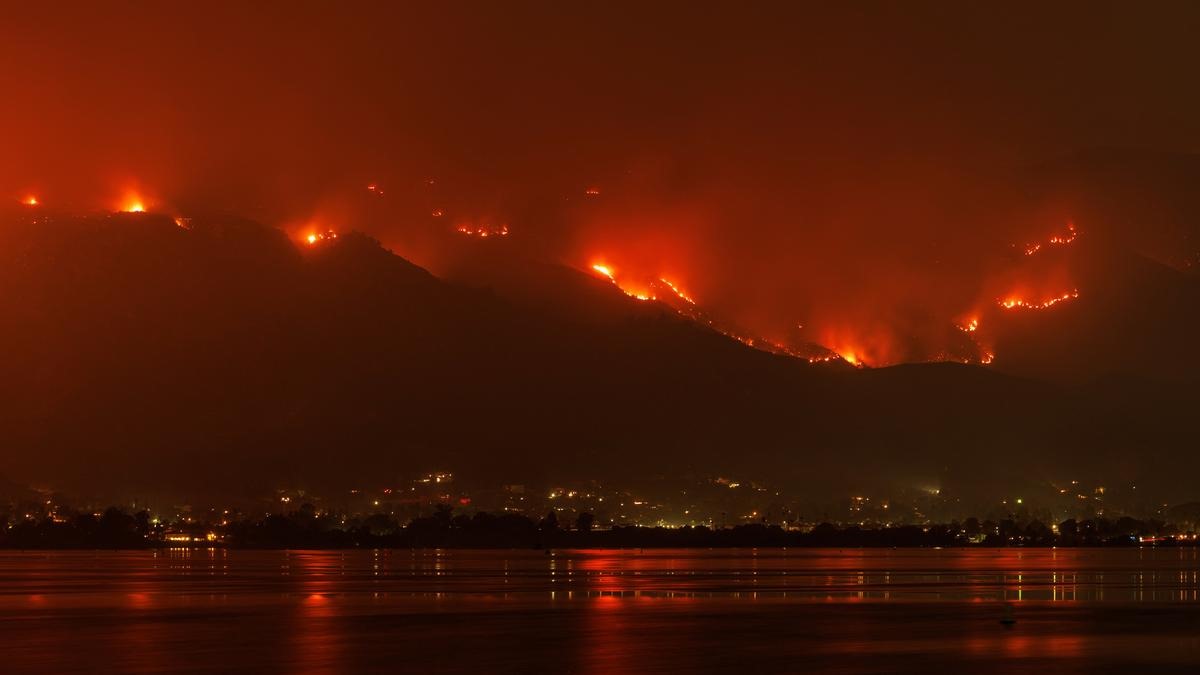Wildfires Rage Out of Control in Southern California
Apocalyptic-looking plumes of smoke filled the skies east of Los Angeles on Tuesday, September 10, 2024, as firefighters battled three major wildfires that erupted amid a blistering heat wave. These wildfires threaten tens of thousands of homes and structures, prompting authorities to issue and expand evacuation orders across the region

Overview of the Wildfires
The wildfires currently affecting Southern California include the Bridge Fire, the Airport Fire, and the Line Fire. Each of these blazes has rapidly expanded, fueled by high temperatures, low humidity, and strong winds. The fires have created a hazardous environment, forcing thousands of residents to evacuate their homes
Bridge Fire: Originating in the Angeles National Forest, the Bridge Fire has exploded to approximately 34,000 acres. The fire, which started on September 8, has prompted mandatory evacuation orders for communities in Mount Baldy and Wrightwood. Fire officials are particularly concerned about the safety of residents in these areas, urging them to leave as the fire continues to grow
Airport Fire: This fire ignited near Trabuco Canyon and has quickly spread to cover about 30 square miles (78 square kilometers) within a short time. Firefighters are using bulldozers, helicopters, and planes to combat the blaze, which was reportedly sparked by heavy equipment being used by public workers. As of Tuesday night, the Airport Fire remains uncontained and poses a significant threat to nearby recreational cabins and infrastructure
Line Fire: Burning in San Bernardino County, the Line Fire has charred over 51 square miles (132 square kilometers) and threatens approximately 65,600 homes and buildings. Evacuation orders have been issued for residents along the southern edge of Big Bear Lake, a popular destination for outdoor enthusiasts. The fire has generated thick clouds of smoke, prompting several school districts in the area to close due to safety concerns
Evacuation Orders and Community Response
As the fires continue to spread, evacuation orders have been expanded to include parts of the popular ski town of Big Bear and the entire community of Wrightwood, which is home to about 4,500 residents. Authorities have implored residents to leave their homes for their safety, emphasizing that "there is no property worth risking your life for," as stated by Los Angeles County Sheriff Robert Luna
Residents have expressed a mix of fear and determination as they face the threat of wildfires. Many have prepared their homes for potential fire damage but are grappling with the decision to evacuate. Janice Quick, president of the Wrightwood Chamber of Commerce, shared her experience of watching embers rain down on her community, describing it as something she had never seen before in her 45 years of living there
Firefighting Efforts and Challenges
Firefighters are working tirelessly to contain the blazes, but the extreme heat and dry conditions present significant challenges. High temperatures have increased fire activity, and the forecast for the coming days indicates that conditions may remain conducive to fire spread. Fire officials are hopeful that cooler weather may provide some relief, allowing them to gain control over the flames
In the meantime, air quality in the region has deteriorated due to the smoke from the wildfires, with officials advising residents to stay indoors and wear masks if they must go outside. The combination of intense heat, dry conditions, and smoke has created a hazardous environment for both residents and firefighters
The Broader Context of Wildfires in California
The current wildfires in Southern California are part of a broader trend of increasing wildfire activity in the region, exacerbated by climate change and prolonged drought conditions. Wildfires have become a regular occurrence in California, particularly during the summer and fall months when temperatures soar and vegetation dries out
In recent years, California has seen a rise in the frequency and intensity of wildfires, leading to significant property damage and loss of life. The state has implemented various measures to improve fire preparedness and response, but the challenges remain daunting as climate conditions continue to evolve.



